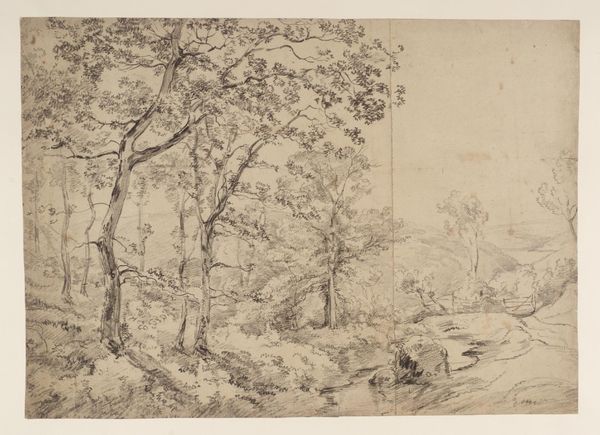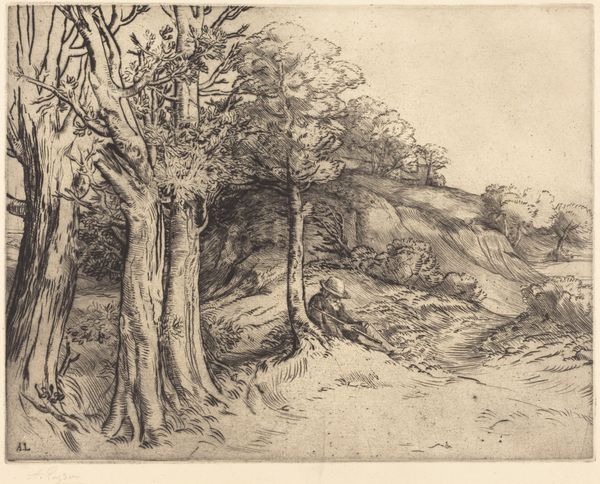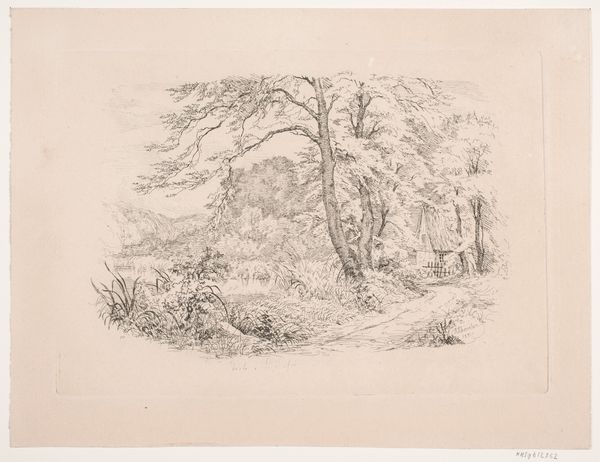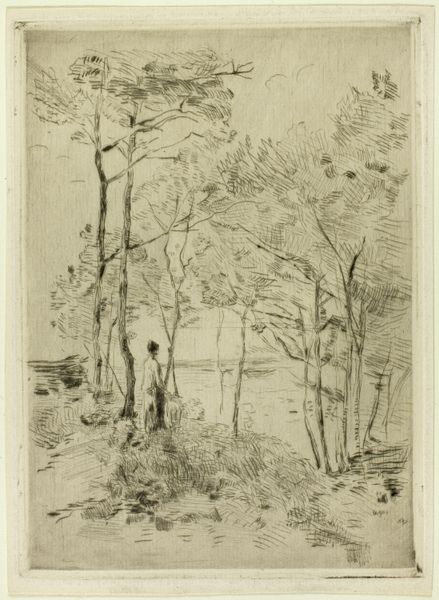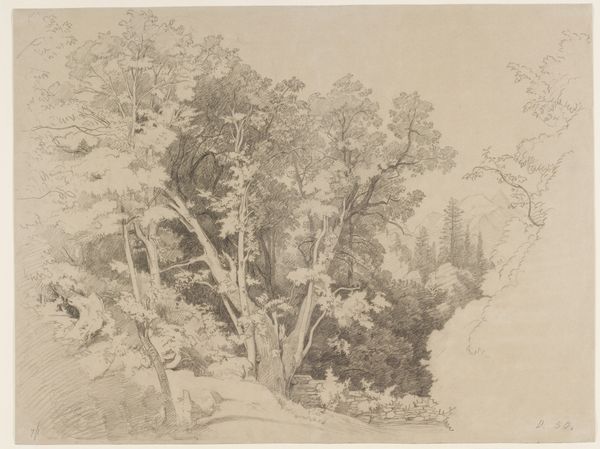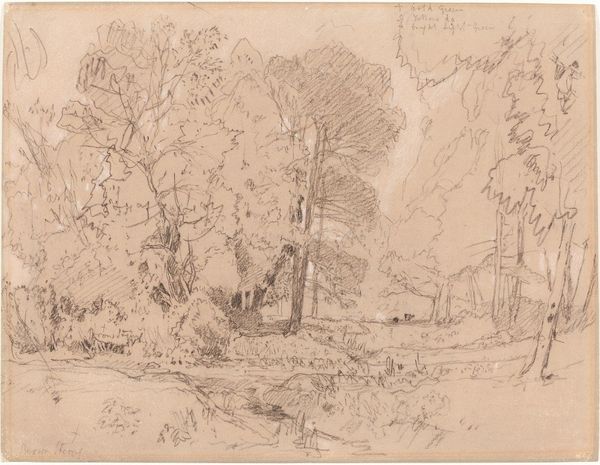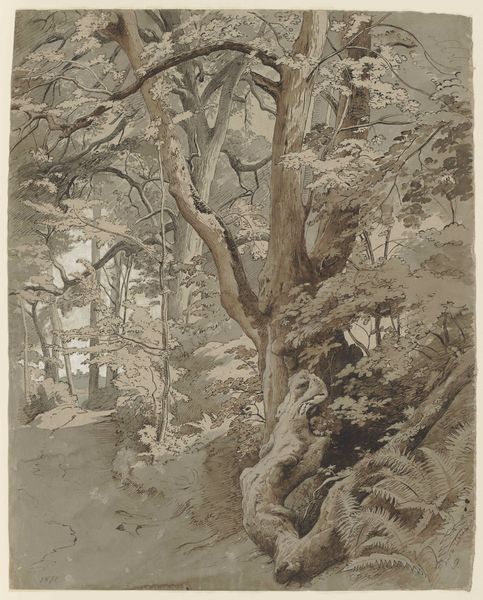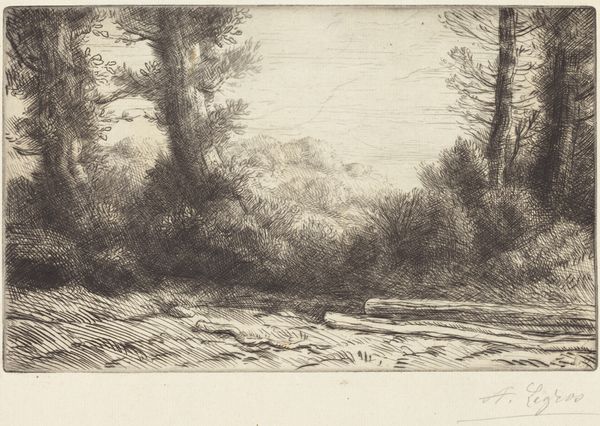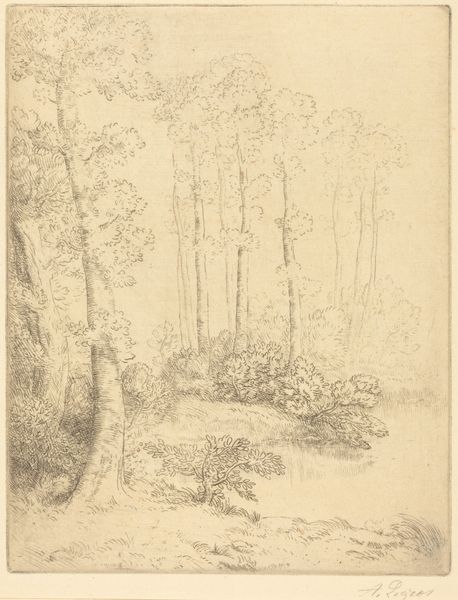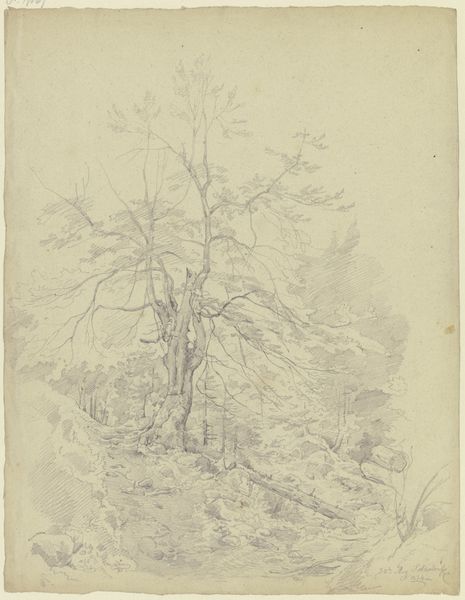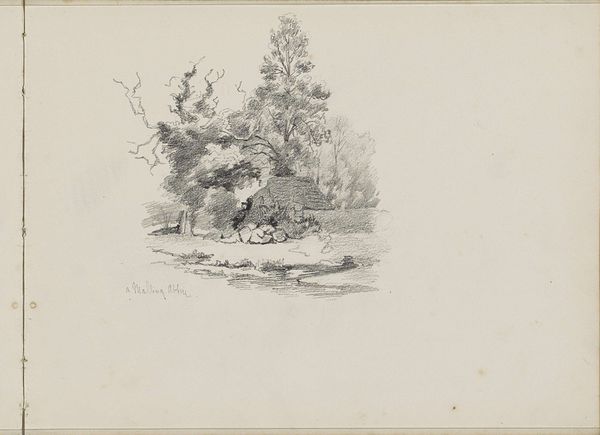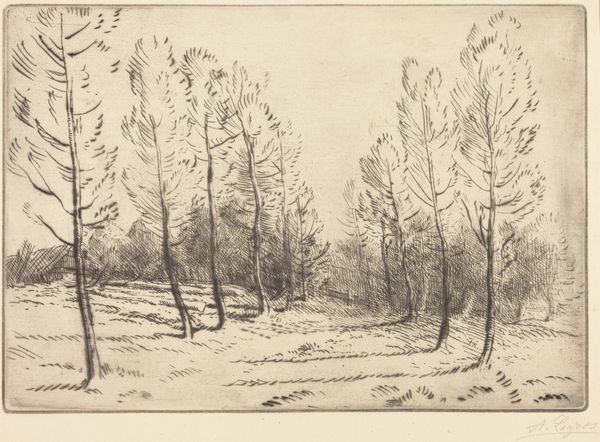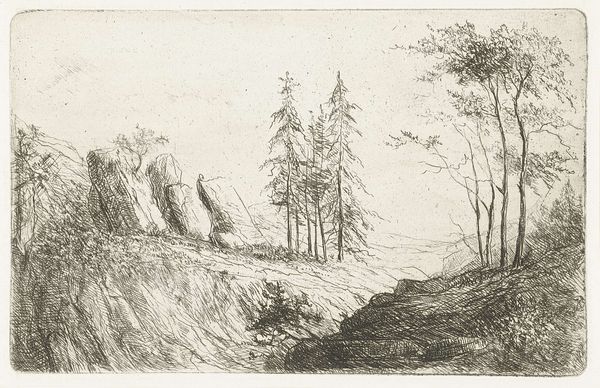
drawing, etching, plein-air, ink, frottage
#
drawing
#
ink drawing
#
etching
#
plein-air
#
landscape
#
etching
#
ink
#
romanticism
#
frottage
Dimensions: 14 7/16 x 12 15/16 in. (36.6 x 32.8 cm)
Copyright: Public Domain
Editor: So, this is Carl Wagner's "Landscape with cattle in Weißbach on the Rhön," made in 1841 using ink and etching. It has this wistful, almost melancholy feeling for me, despite being a fairly typical landscape. What do you see in this piece? Curator: Beyond its seemingly conventional depiction of nature, I see a coded commentary on land use and social dynamics. Wagner, working within Romanticism, doesn’t simply portray an untouched idyll. The inclusion of cattle, the deliberate shaping of the landscape—these speak to human intervention. How does this 'intervention' resonate with broader historical power structures involving land ownership and labor in 19th-century Germany? Editor: So, it's not just a pretty scene? Curator: Precisely. Think about who had access to this landscape, who profited from it, and who was excluded. The artistic depiction itself can be a form of claiming space and asserting dominance, no? Consider, too, the position of the viewer implied by the composition—are we invited in, or kept at a distance? Is this an invitation, or a declaration? Editor: I hadn’t considered it in terms of access and power before. Now, looking at how the cattle almost blend into the background, it does make me wonder about their role, their purpose in the composition and the broader context. Curator: Indeed. Romanticism often masked social and economic realities within idealized scenes. Questioning this idealization is key. These weren’t neutral depictions; they were products of their time, reflecting and sometimes reinforcing existing inequalities. What stories might the people who worked that land tell, in contrast to Wagner's "artful" interpretation? Editor: That definitely changes how I see the work. It’s not just about beauty, but about the story it *doesn’t* tell, and who’s missing from that narrative. Curator: Exactly. Art is rarely just about what’s visible. It’s about understanding what's invisible, too.
Comments
No comments
Be the first to comment and join the conversation on the ultimate creative platform.

